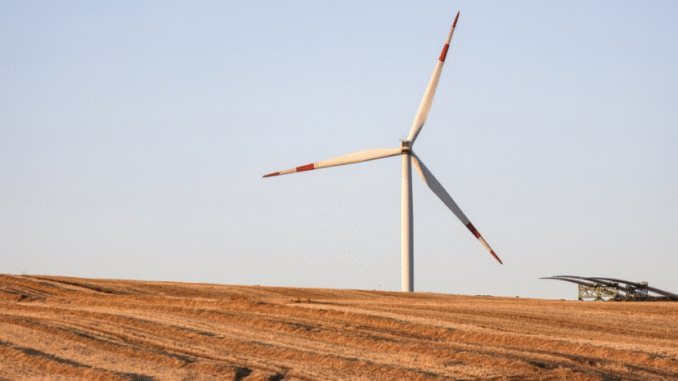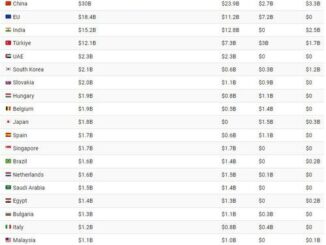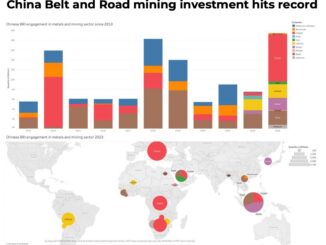
As the world races toward renewable energy targets, a new Finnish study has cast a shadow over the wind power industry, revealing that the costs of dismantling onshore wind turbines are far higher than industry estimates suggest. Published in August 2025, the report titled “Assessment of Decommissioning Costs and Financing Models for Onshore Wind Turbines” by researchers from the Finnish Environment Institute estimates minimum total costs per turbine at €929,500, escalating to a maximum of €1,509,000 when including comprehensive foundation removal and landscaping.
This starkly contrasts with typical industry claims of €100,000 to €200,000 per turbine, which often ignore site-specific factors like terrain, soil conditions, and regulatory requirements for hazardous material handling.
The study warns of a looming crisis as aging wind farms reach the end of their 20-30-year lifespans, potentially leaving governments, landowners, and taxpayers footing massive bills if decommissioning funds are inadequate.
With global wind capacity exceeding 1,000 GW as of mid-2025, the implications extend far beyond Finland, highlighting underfunded restoration efforts and environmental risks from unmanaged waste like turbine blades and foundations.
This article explores the global scale of land reclamation costs (encompassing decommissioning and site restoration), broken down by onshore and offshore segments across the top 10 countries by installed capacity. It also examines the U.S. context, where subsidy reductions are accelerating closures, the number of abandoned wind farms, and how many global projects adequately account for these costs in their funding.
Global Land Reclamation Costs for Wind Farms
Land reclamation for wind farms involves dismantling turbines, removing foundations, recycling materials, and restoring sites to their natural state. Costs vary widely due to factors like turbine size, location, and regulations, but recent analyses provide average estimates: approximately $50,000 to $150,000 per MW for onshore farms and $200,000 to $600,000 per MW for offshore, based on studies of European and U.S. projects.
These figures often represent 3-5% of a project’s total capital expenditure, though revenues from recycling steel and copper can offset 10-20% if markets are favorable.
Globally, with around 930 GW onshore and 70 GW offshore installed as of 2024 (projected to grow modestly into 2025), total estimated reclamation costs could reach $70-150 billion if all farms were decommissioned today.
This is a hypothetical aggregate; in reality, farms are decommissioned gradually. The top 10 countries account for over 80% of global capacity, with China dominating.
Below is a breakdown of installed capacity and estimated reclamation costs, using mid-range averages ($100,000/MW onshore, $400,000/MW offshore) derived from industry reports. Capacities are based on 2024 data with 2025 projections incorporating recent additions.

These estimates highlight China’s outsized exposure, with potential costs exceeding $55 billion, driven by its rapid expansion (86.7 GW added in 2024 alone).
Offshore costs are disproportionately high due to complex marine operations, with the UK facing $6 billion for its 15 GW alone.
As turbines grow larger (average hub heights now 146 meters), costs could rise 20-30% further.
Subsidy Reductions and Closures in the United States
In the U.S., where wind capacity stands at 145 GW, recent policy shifts under the Trump administration are exacerbating decommissioning challenges.
The “One Big Beautiful Bill Act” signed in July 2025 effectively ends renewable tax credits after 2026 for projects not yet under construction, leading to widespread cancellations.
An analysis by E2 reports $22 billion in clean energy projects canceled or scaled back in the first half of 2025, including several wind farms, with a net reduction of 430 MW in onshore outlook through 2029 due to uncertainty.
Additional executive orders have halted $75 million in climate grants and imposed stricter reviews on new developments, potentially forcing early closures of marginal farms reliant on subsidies like the Production Tax Credit (PTC).
This could accelerate decommissioning, as operators face rising operational costs without federal support. Project 2025, a conservative policy blueprint, further threatens the Inflation Reduction Act’s incentives, risking broader industry contraction.
Abandoned Wind Farms in the United States
Claims of “14,000 abandoned wind turbines” in the U.S. are a persistent myth, debunked multiple times as originating from outdated or exaggerated reports on early California installations.
In reality, over 11,000 turbines have been claimed to have been properly decommissioned since 1992; however, true “abandonments”—where sites are left unrestored—are reportedly claimed to be rare due to state and federal bonding requirements. And I am finding documentation just as hard to find as the wind farm maintenance information. We found that wind farms are not fiscally sustainable from day one, and that maintenance becomes particularly heavy after 3 years, with 8 years being the magic number beyond which they become unsustainable, even with subsidies. Rate increases had to be granted at the 8-year mark to keep them operational.
Just last week, even President Trump was made aware of our 8-year number and findings, as he mentioned that they only last 8 years in international interviews. Just wait, as we are about to see a large number of plants in the next two years fail due to the elimination of subsidies and the lack of money available for nameplate upgrades.
While writing this article, it is interesting that the search for known wind farms that have been abandoned is being removed. One of them is the Patterson Pass Road in California, and it is like they are trying to cover up the costs.
Notable examples include the Kama’oa wind farm in Hawaii (37 turbines, dismantled in 2006 but with remnants lingering) and South Padre Island in Texas (small farm left standing after bankruptcy). Overall, fewer than 10 full farms (comprising a few hundred turbines) are considered abandoned or partially unrestored, primarily from the 1980s-1990s era.
Offshore, several proposed projects like Cape Wind have been canceled pre-construction, but no built farms have been abandoned.
Global Accounting for Land Reclamation in Project Funding
Globally, most wind projects include some provision for decommissioning, often mandated by regulations requiring financial assurances like bonds or escrow funds.
However, the Finnish study and others reveal widespread underestimation, with only about 60-70% of projects fully funding costs based on realistic assessments, leaving gaps of 20-50% in provisions.
In Europe and the U.S., over 80% of projects have dedicated funds (typically 3% of capex), but in emerging markets like India and Brazil, it’s lower at 40-60%, increasing the risks of incomplete reclamation.
Only seven full-scale offshore farms have been decommissioned worldwide, underscoring the limited experience and potential for unfunded liabilities as the first wave of farms reaches the end of their lifespan by 2030.
Conclusion
The Finnish study’s revelations underscore a brewing crisis in the wind sector: underestimated dismantling costs could derail net-zero ambitions, leaving environmental scars and financial burdens.
With global reclamation potentially costing over $100 billion for top countries alone, policymakers must enforce robust funding models. In the U.S., subsidy cuts amplify these risks, but proactive regulation could mitigate abandonments and ensure sustainable transitions. As wind power expands, addressing this “end-of-life” challenge is essential to maintain public trust in renewables.
As I stated above, we are about to see a huge land reclamation crisis in the United States, and it will be well more than 80 billion dollars to get them cleaned up and recycled. Who will be left holding the bag will be a huge question yet to be answered. It is clear that President Trump understands that the Wind Farms do not last 20 to 30 years, and his number on “they only last 8 years” is exactly the number we have been talking about on the Energy News Beat podcast. They are not fiscally responsible from day one, and they have been using additional name plate upgrades at the 3-year mark, funded by subsidies, followed by rate increases at the 8-year mark.
Consider ERCOT as an example. With all of the money spent on wind and solar, we are still only at 19% wind and 15% solar, and none of them have land reclamation funded. When examining the oil and gas programs, it becomes apparent that E&P operators are required to fund well programs, yet orphaned wells persist. The wind and solar farms have had an overwhelming source of funding and easy money available, but when that dries up, we will start seeing the real problems with wind and solar start to show up. The day of recoking for wind and solar is soon.

Is Oil & Gas Right for Your Portfolio?
Crude Oil, LNG, Jet Fuel price quote
ENB Top News
ENB
Energy Dashboard
ENB Podcast
ENB Substack






